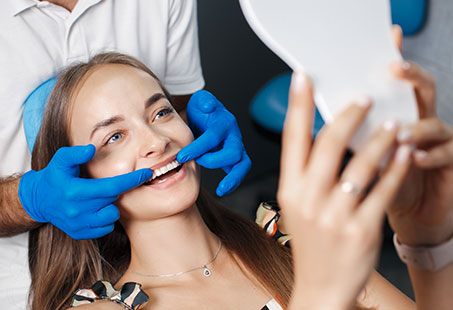No-prep veneers, as the name suggests, are a non-invasive alternative to traditional veneers. Because they do not require any aggressive tooth shaving, they’ve become quite popular in the world of minimally invasive cosmetic dentistry.
Since these prepless veneers are more conservative, many patients feel more comfortable getting them. However, not everyone is a suitable candidate for these restorations.
The problem is that their biggest strength is also their biggest weakness. And, so it’s not always the best option when it comes to dental veneers.
Here, you’ll find everything you need to know about them so you can decide whether they’re right for you.
What Are No-Prep Veneers?
No-prep veneers are ultra-thin shells of ceramic, porcelain or composite that adhere directly to the unshaved enamel of the tooth.
Because it doesn’t require tooth preparation, it’s called “no-prep” or “prepless.”
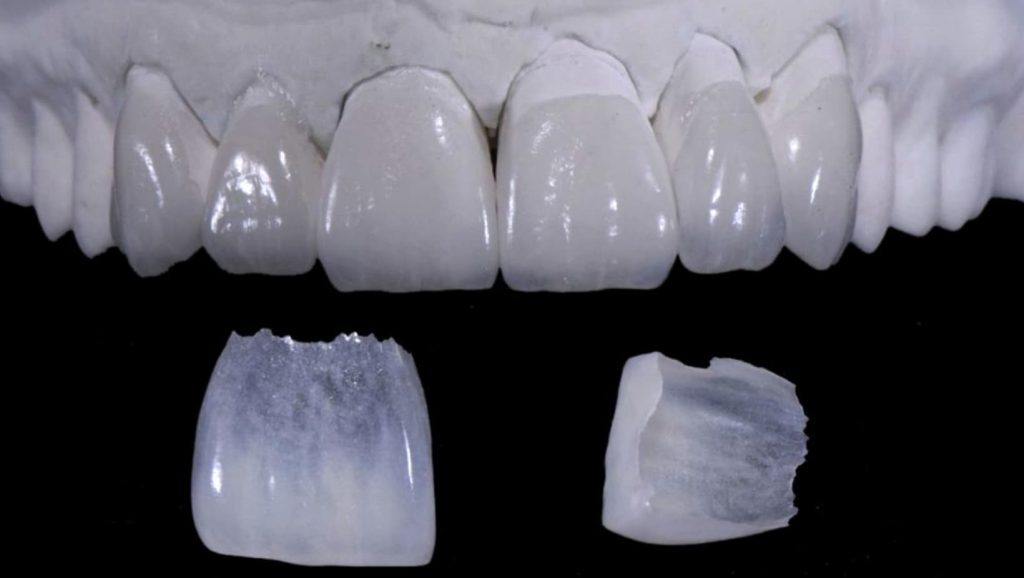
It should, however, be noted that some clinics market even the minimally-invasive veneers as no-prep. But they are, of course, different.
Still, depending on the kind of teeth you have, your dentist may do some slight prepping before placing the prepless veneers.
The idea behind no-prep veneers is to conserve the existing tooth structure while improving the aesthetics of the smile.
Unlike traditional veneers, which are around 0.3-1 mm thick, no-prep veneers are only 0.2-0.5 mm thick. Usually, they are as thick as contact lenses.
They’re almost translucent – which is a limitation in the case of some patients. Even so, they are quicker to apply, don’t require anaesthesia, and don’t cause pain.
This is why they are considered an attractive alternative to traditional, bulkier veneers. However, they aren’t always the best.
What Are The Different Types Of No-Prep Veneers?
Mainly, there are three popular brands of no-prep veneers, which are as follows:
- Lumineers – A product of DenMat, lumineers are very thin shells made of porcelain. These usually don’t require any tooth prepping. The dentist just takes an impression and sends it to the lab to prepare the Lumineers. One Lumineer can cost anywhere between £650-£1,600.
- DURAthin – Handcrafted by the Experience Dental Studio, DURAthin is also made from porcelain and is about 0.2 mm thick. It doesn’t require any prep work, either.
- Vivaneers – Made by Glidewell Dental, Vivaneers are another type of porcelain no-prep veneers. These are about 0.3 mm thick and also don’t require any tooth preparation.

These three “types” of prepless veneers differ mainly in their marketing. A major reason why Lumineers are the most popular is that they’ve been the most heavily marketed.
Of course, there are differences in production as well. Nevertheless, they are all basically ultra-thin porcelain veneers that do not require enamel drilling.
Who Is A Good Candidate For No-Prep Veneers?
No-prep veneers are only recommended if you wish to modify the aesthetics of your smile slightly. So, for instance, they can be suitable for:
- Microdontia (small teeth)
- Moderate diastema (gap) closure
- Slightly worn teeth
- Mildly misaligned, crooked, crowded or cracked teeth
- Slightly discoloured teeth
For the prepless veneer to adhere properly, the underlying tooth’s structure must be strong and solid. If it’s too badly damaged, you won’t make a good candidate for these veneers.
Additionally, keep in mind that these veneers are translucent. This means that if you have dark yellow, brown, grey, or black discolouration on your teeth, it will show through these veneers.
So, they’re not suitable if your teeth require more extensive repair work.
What’s The Procedure For No-Prep Veneers?
Since no prep veneers do not require extensive shaving, there’s no need for local anaesthesia before any appointment.
Other than that, the process for no-prep veneers usually takes place as follows:
- Your teeth will be sculpted with wax and resin.
- Impression material (usually alginate) is filled into a moulding tray.
- The tray is placed against the teeth and gums for 3-4 minutes.
- Labs prepare veneers within a few weeks of receiving the impression.
- No-prep veneers are held to the teeth to check for fit.
- If good, the teeth are first etched with acid.
- Silane (adhesion promoter) is applied to veneers.
- Cement is applied to the teeth, and veneers are fixed.
- Excess cement is brushed off.
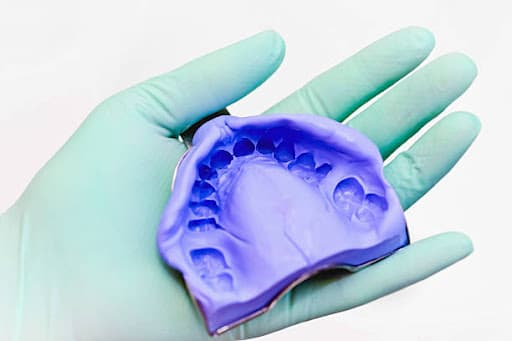
This is usually done in about 2-3 appointments.
During the first appointment, just the impression is made. If some tooth shaving is required, it will be done before the impression is taken. This shouldn’t take too long.
In the second appointment, the veneers’ fit is checked. If it’s good, they’re placed then and there. But if they need any further adjustments, you’ll have to come back again.
Each appointment should take about an hour or so.
How Long Do No-Prep Veneers Last?
If no-prep veneers are taken care of properly, you can expect them to last at least five years or even longer.
Durability, however, remains a concern when it comes to prepless veneers. It’s because they’re so thin. Even while being applied at the clinic, they can break.
So, you have to be very careful with them. In order to avoid breaking them, you’ll probably be advised to avoid hard, sticky foods.
You can’t use these veneers to open bottles or bags of chips. You shouldn’t use them to chew or to bite on hard foods (nuts, ice, meat) either.
If you have a habit of grinding your teeth, you should consider wearing a night guard.
Other than that, to make them last longer, it’s important that you take good care of your oral health. You need to clean them like real teeth.
Are No-Prep Veneers Reversible?
Since no-prep veneers don’t require any enamel reduction, they are considered reversible.
They can also be removed more easily than traditional veneers, so they aren’t exactly permanent either.
Still, keep in mind that not no-prep veneers aren’t always no-prep. Sometimes, it’s necessary to remove some enamel. In that case, of course, those processes are irreversible.
What Is The Downside Of No-Prep Veneers?
One of the main downsides of no-prep veneers is that it’s not strong or thick enough.
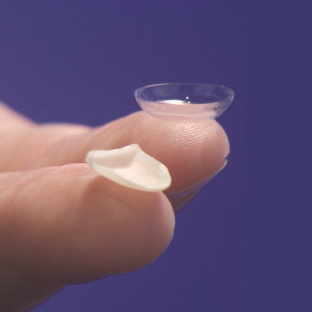
For one, it makes it more easily breakable. Secondly, it cannot conceal more obvious aesthetic issues with teeth.
At most, they’re suitable for minor fixes.
Other than that, according to research published in the Case Reports in Dentistry, no prep veneers can also cause the problems of over-contouring (being oversized). That can, in turn, cause gum inflammation.
Do No-Prep Veneers Damage Teeth?
No-prep veneers don’t really “damage” the teeth because the enamel is completely intact.
Some degree of damage to the enamel is inevitable, however, if the dentist shaves the teeth.
Also, keep in mind that removing the no-prep veneers can also change the enamel a little. So, it can’t be said that these veneers are completely harmless.
Are Prepless Veneers Worth It?
A prepless veneer can be worth it if you have a mild aesthetic issue and do not want to shave your enamel.
You also don’t have to deal with temporary post-op sensitivity with these veneers. This usually accompanies traditional veneers because of teeth shaving.
Meanwhile, with them, there’s no need to wear any temporary veneers either.
Done right, these can also look quite natural.
How Much Are No-Prep Veneers?
In the UK, one no-prep veneer can cost anywhere from £650 to £1,500. It’s around the same as a traditional veneer.
It’s possible for you to get it for cheaper, though, since these veneers don’t require extra prepping or any temporary veneers.
Still, within the UK, getting no-prep (or traditional) veneers can be very expensive, which is why many patients choose to become medical tourists to Turkey.
In Turkey, you can get a no-prep veneer for around £150-£300. While a traditional veneer also costs around £200-£250.
No-Prep Veneers Vs. Traditional Veneers: What’s The Difference?
The main difference between traditional veneers and no-prep veneers is their thickness.
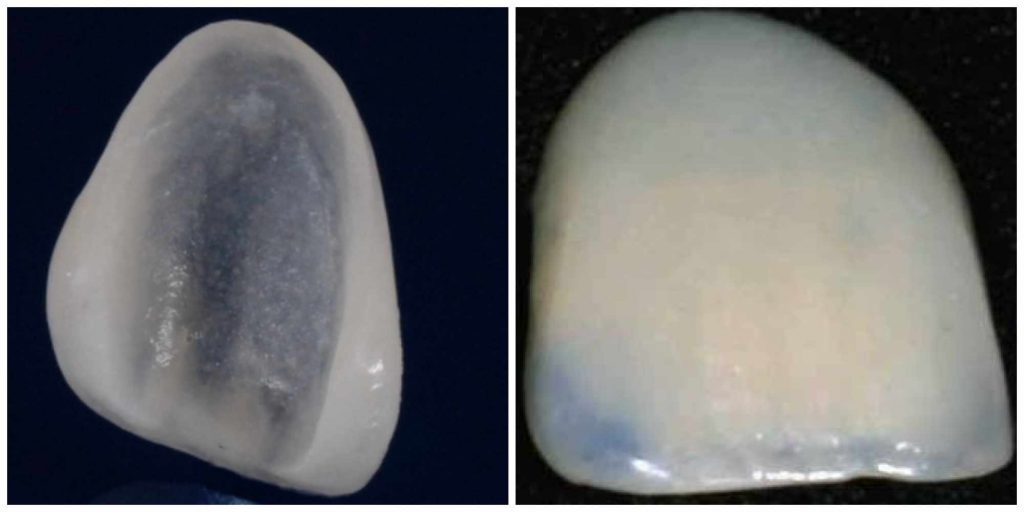
No-prep veneers can be almost 0.5-0.7 mm thinner than classic porcelain veneers. The latter is also much thicker and not exactly see-through.
However, because it’s thicker (and more durable), more of the tooth needs to be shaved so that it doesn’t look too bulky and unnatural.
Here’s a summary of the differences between the two:
| No-Prep Veneers | Traditional Veneers | |
| Procedure | Impression is made and sent to a dental lab. After 1-2 weeks, the veneers’ fit is checked before being cemented. | 0.5 mm enamel is shaved, and an impression is made and sent to labs. Meanwhile, temporary veneers are placed on teeth. After 1 week, permanent veneers are checked and cemented permanently. |
| Candidates | For minor chips, gaps, discolouration alignment, crowding, and sizing issues. | For sizable gaps, tooth damage, badly stained teeth, unevenness, cracks, and size issues. |
| Anaesthesia | Not required | Local anaesthesia |
| Longevity | ~5 years | 5-10 years |
| Results | Semi-permanent | Permanent |
| Reversibility | Reversible | Irreversible |
| Side Effects (temporary) | None | Sensitivity and discomfort |
| Cost | £650-£1,500 in the UK£150-300 in Turkey | £650-1,000 in the UK£200-300 in Turkey |
Conclusion
Many people want to get no-prep veneers because they’re marketed as quick, non-invasive, and painless restorations.
While it’s true, sometimes, slight tooth prepping is required, even with no-prep veneers. It all depends on the condition of your teeth.
Additionally, there are some downsides to getting these prepless veneers. Durability is a big issue. Also, these veneers are suitable for teeth that are too badly damaged.
In general, veneers are not always the most suitable restorations. You may be a better candidate for crowns instead. However, in order to find the best option for yourself, you need to consult a board-certified dentist.
Reviewed and Approved by Dr Izbel Aksit
